Specifications and Main Features
- TLCS-870 Series micro computer features an 8 chip micro for a single microcomputer.
- In relation to the frequency generated, the instruction execution time roughly takes about 0.5 micro seconds: 122 for lower frequencies i.e., 32 kHz.
- TMP87CM24A – Get yourself a ROM option here which is modal 32K x 8 bits or alternatively modal TMP87CP24A that attains a maximum of 48K x 8 bits.
- Who needs more than 2? Get yourself a 2 x 8 bits RAM which fits the bill perfectly well.
- Prefers under wristwatch packages? Try P-LQFP100-1414-0.50C and thank me later.
- Not 1, not 2 but 14 interrupt sources and not 5 but 9 internal ones whom get nested interrupt control.
- Is it hard to imagine less than 69 pins as 10 input/output ports? I surely cannot imagine 10.
- A Stepper motor that solely relies on analog to digital conversion, AD converter does an 8 bit successive approximation.
- What would be even more impressive that an 8 MHz would slightly increase a conversion time of 23 µs and work with 8 different inputs for a higher 92 µs.
- A very macho number of 4, which are also multi functional, functions as timer/counters and 2 are 8 bit and the rest two are 16 bit.
- Has a changeover for tasks switching and the best part is its high speed too.
- Interfaces are two way and 8 bit functions with serial links contacts in between the 8 byte buffers up and down.
- Counting events and timers both with various modes can be melded for a pwm output.
- Auto shut down through the SLEEP or even STOP and 3-4 more modes that save power.
- Pick and select through a 4 or eight mode internal or a external serial clock.
- For a hypothetical internal LCD feature that contains a random memory of around 20 bytes would be a decent enough starting voltage.
- How would a frequency of 3.5 transform into 8 MHz while also boosting the devices voltage upto 5.5?
Revolutionary Application: Introduction to Microcontroller System Design
- optional: Dual clock operation.
- Supported 129 types and 412 basic instructions.
Frequently Asked Questions
Q: What is the maximum operating frequency for the Microcontroller TMP87CM24A/P24A?
Ans: The upper limit for the operating frequency is 8 Megahertz.
Q: Random question: How many interrupt sources does TMP87CM24A/P24A support if any?
Ans: The device is configured with a maximum of 14 interrupt sources where 5 are external and 9 internal one’s.
Q: Does TMP87CM24A/P24A have a display and who is its driver?
Ans: Yes, it caters for an integrated display driver which has a memory capacity of 20 bytes.
Q: What is the time taken by the microcontroller to convert the analog signal into digital form?
Ans: The time taken is 23 micro Seconds when working with an 8 MHz clock or 92 micro Seconds when working with a 2 MHz crystal If you are maintaining the frequency at 8 megahertz.
Q: What kind of devices are suitable for this Microcontroller due to its low power consumption?
Ans: This device has five modes which are suitable for low power consumption. They include STOP, SLOW, IDLE1, IDLE2, and SLEEP.
Q: I am curious to know what memory system does TMP87CM24A/P24A operate with?
Ans: With respect to program data the device uses ROM that can go up to 48k and 2k RAM for normal data.
Q: Does the device TMP87CM24A/P24A come with a dual clocking capability?
Ans: Yes, the device does support dual clocking ability but that is an optional feature.
Q: What is the execution time for multiplication and division operations?
A: At a clock speed of 8 MHz, the multiplication and division computations are estimated to take about 3.5 microseconds.
User Manual
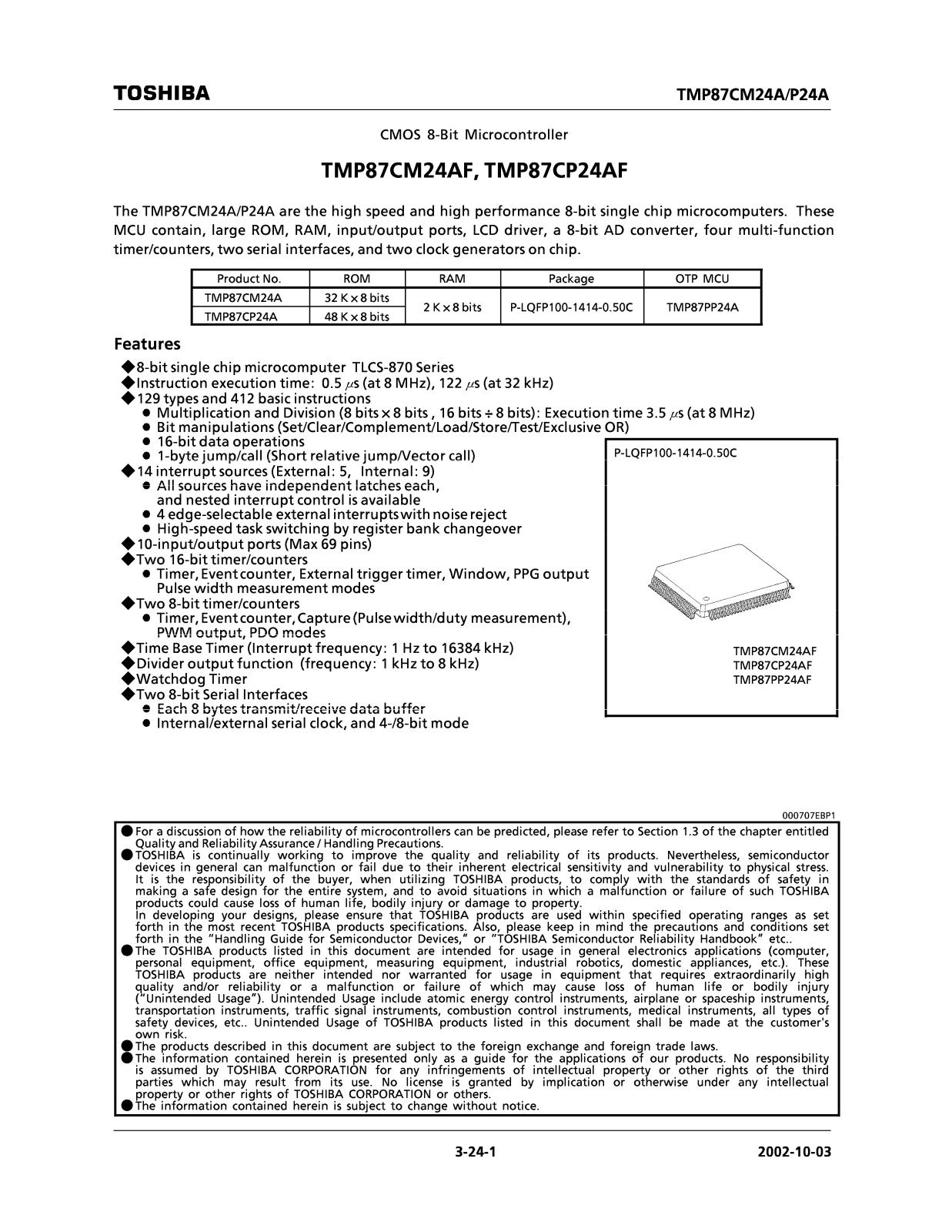





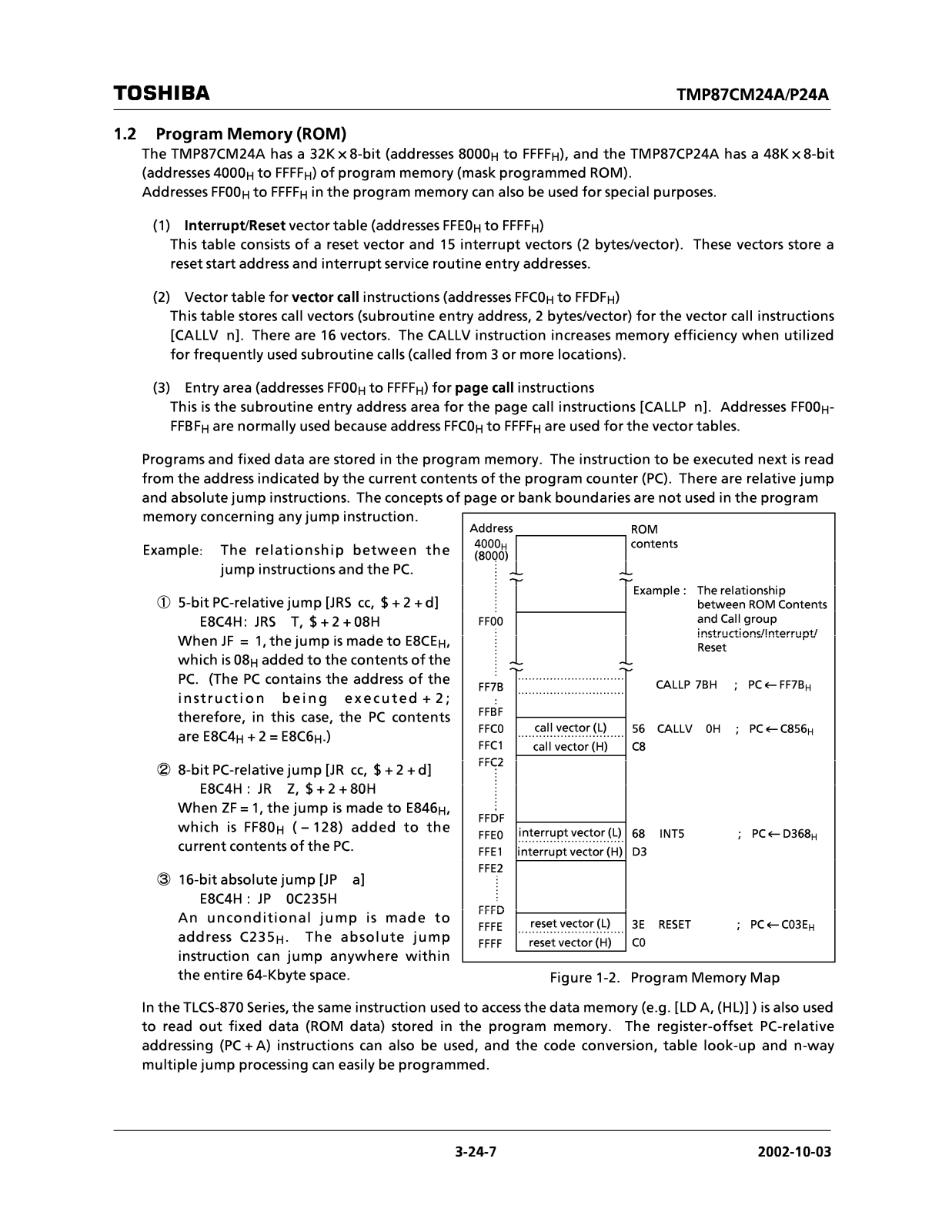





























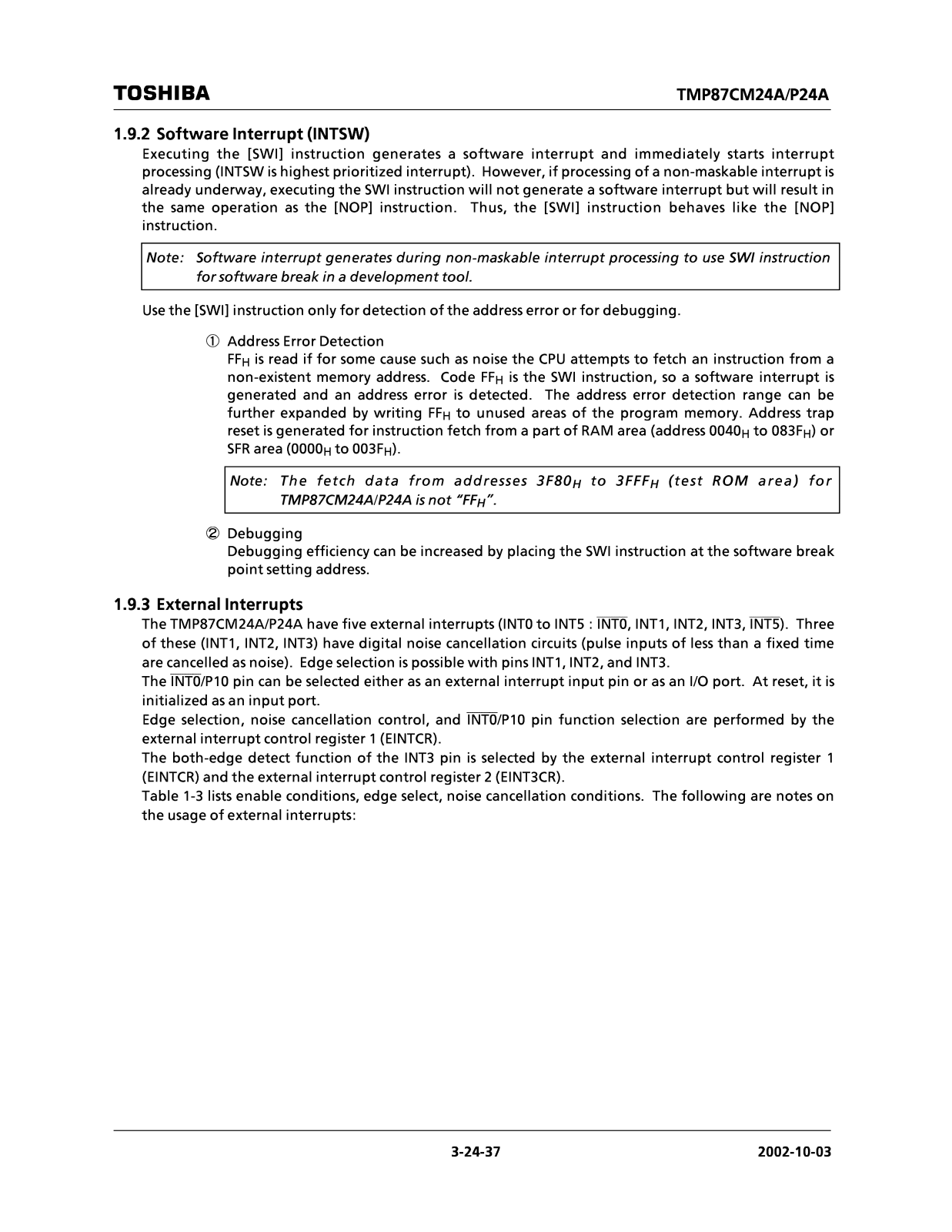


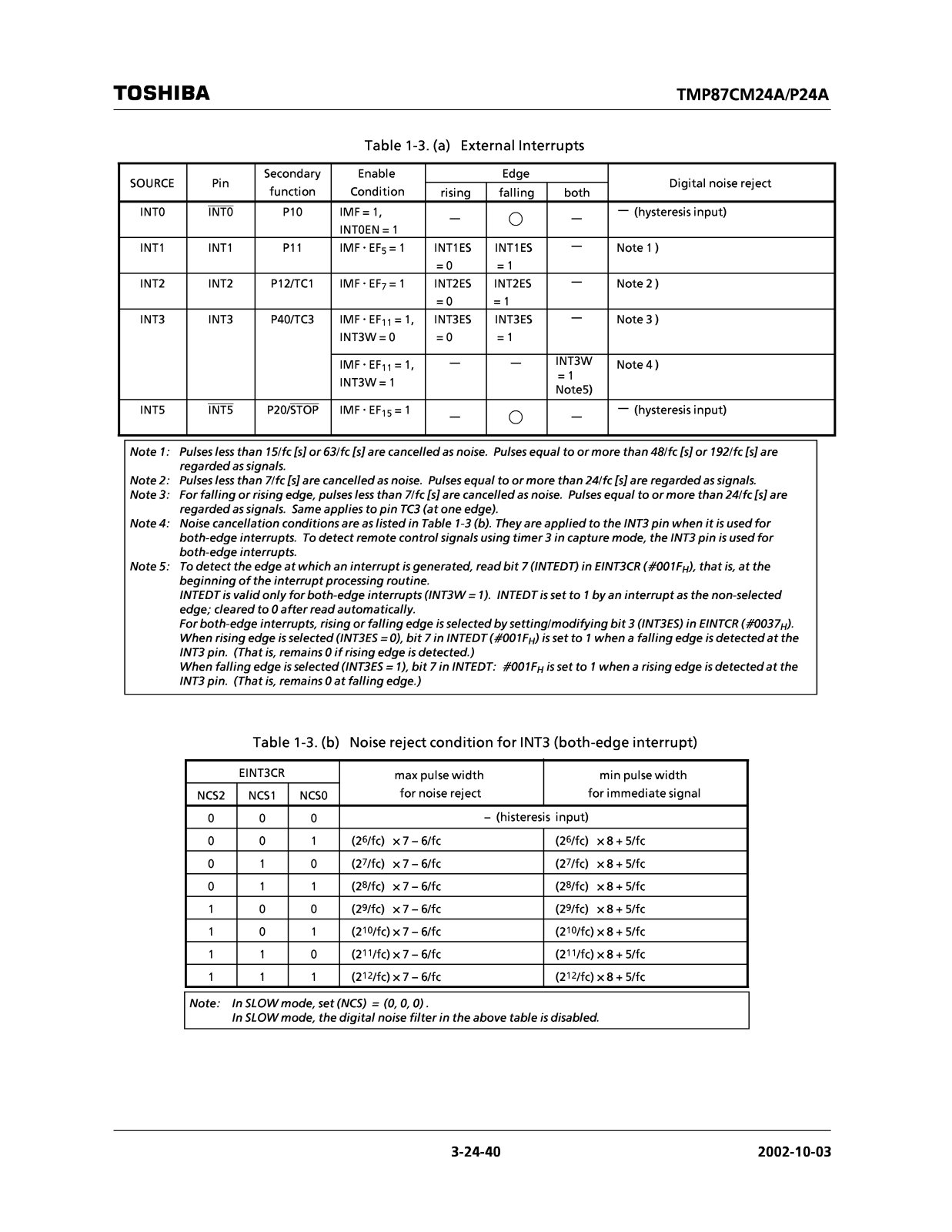









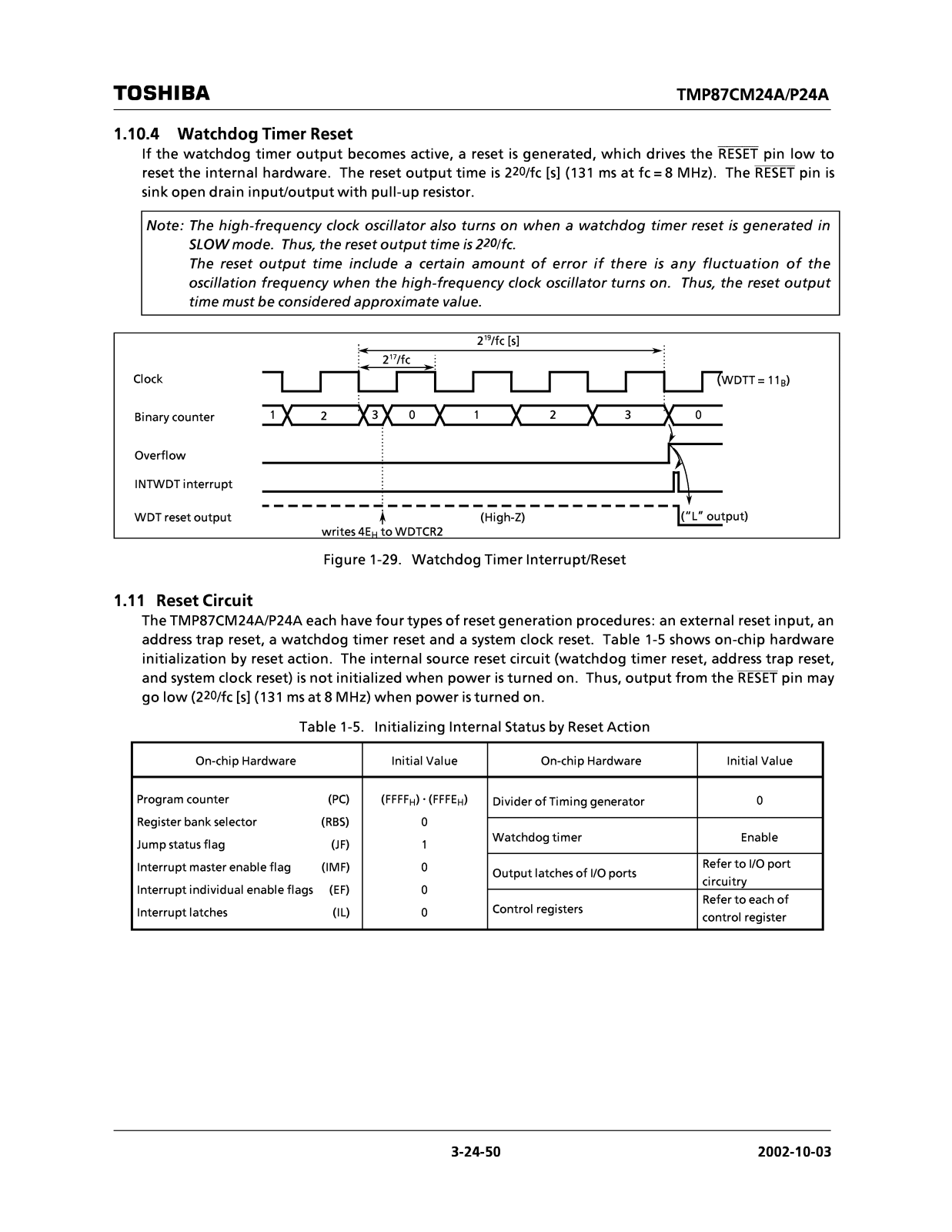












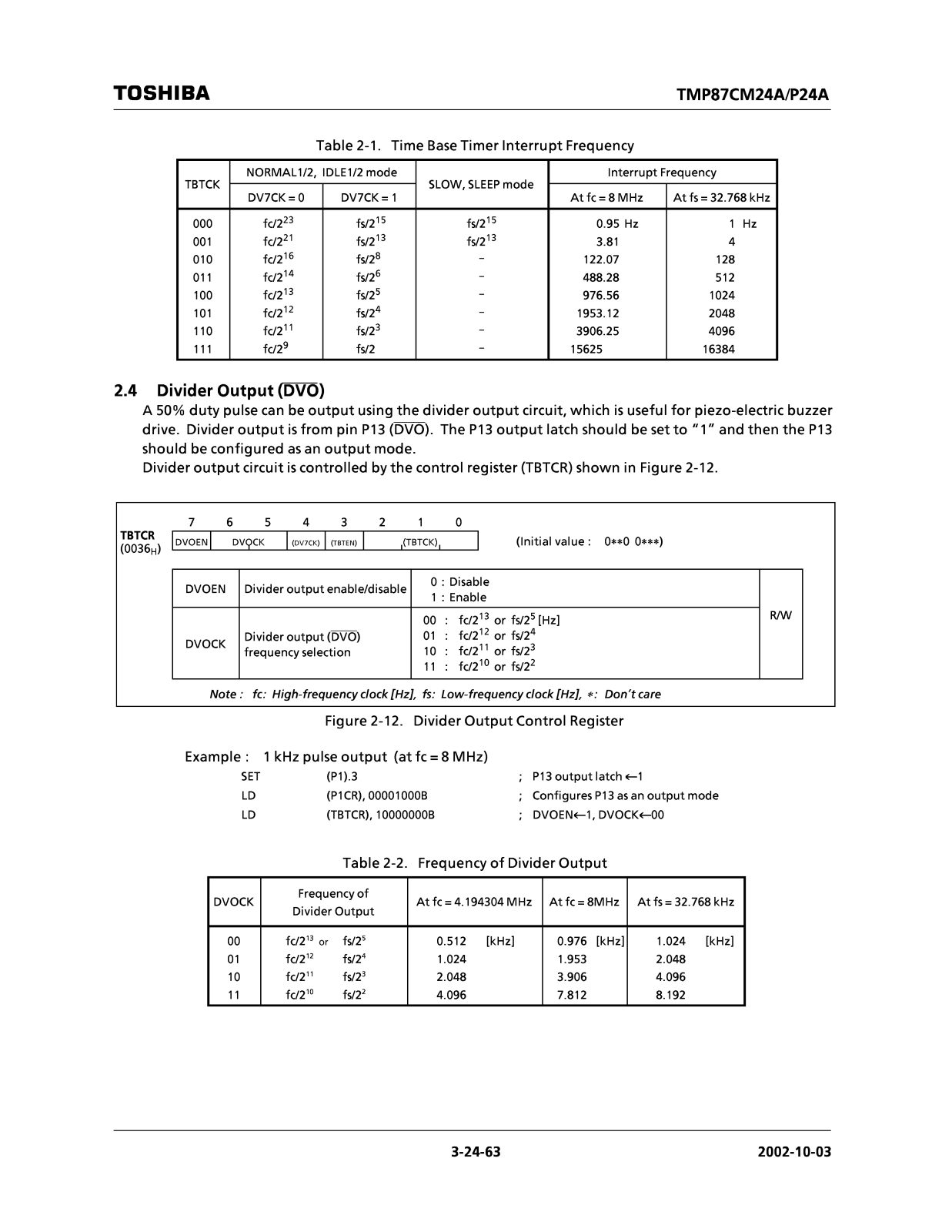





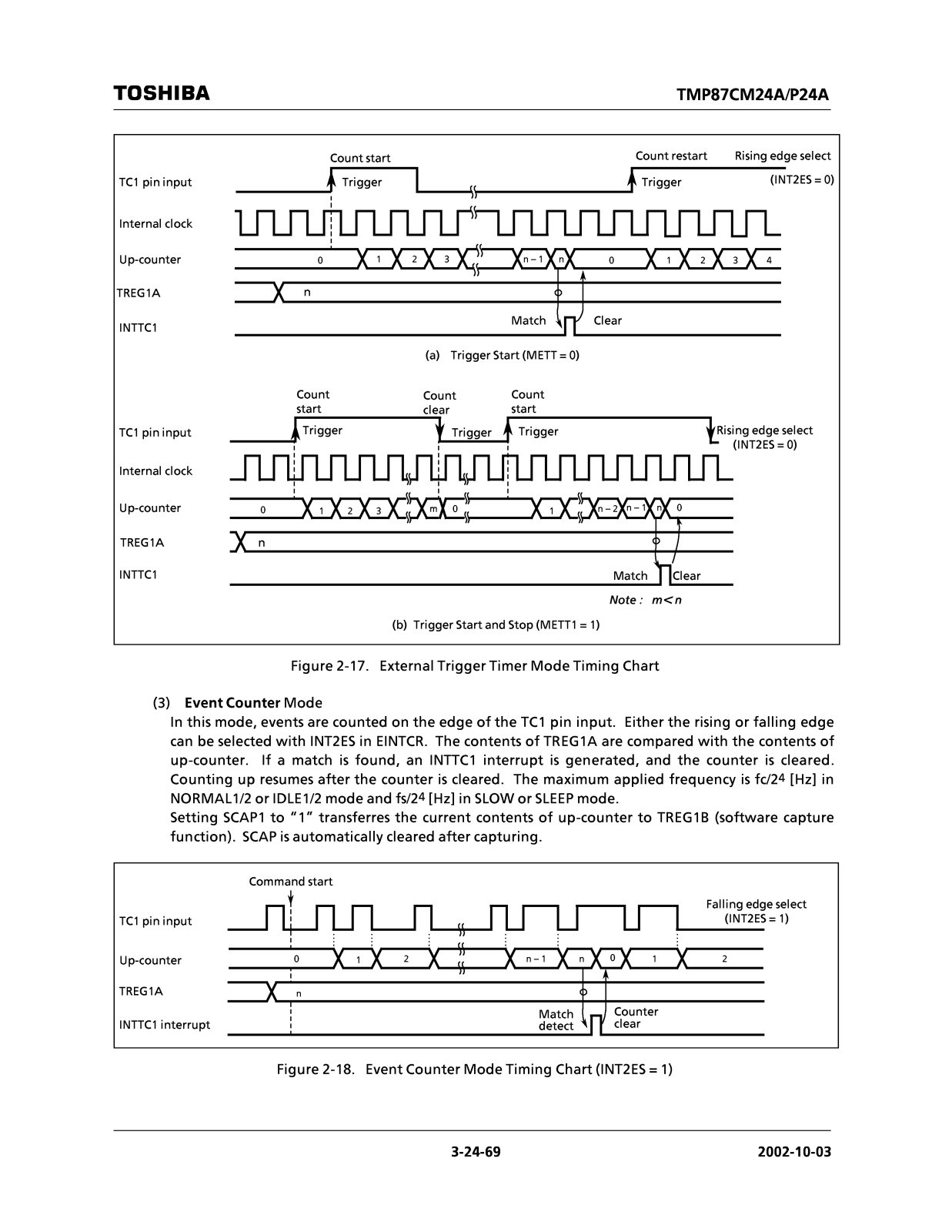










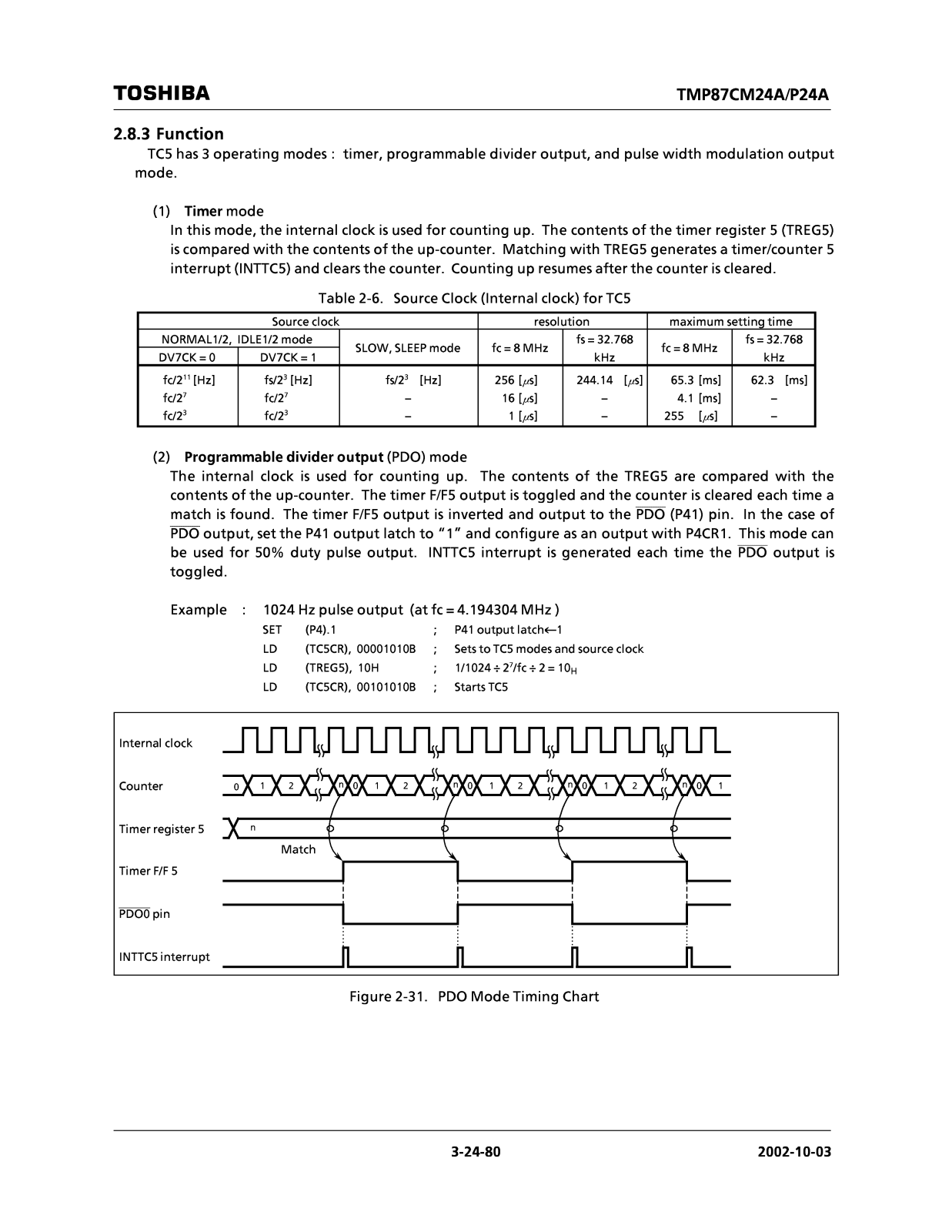





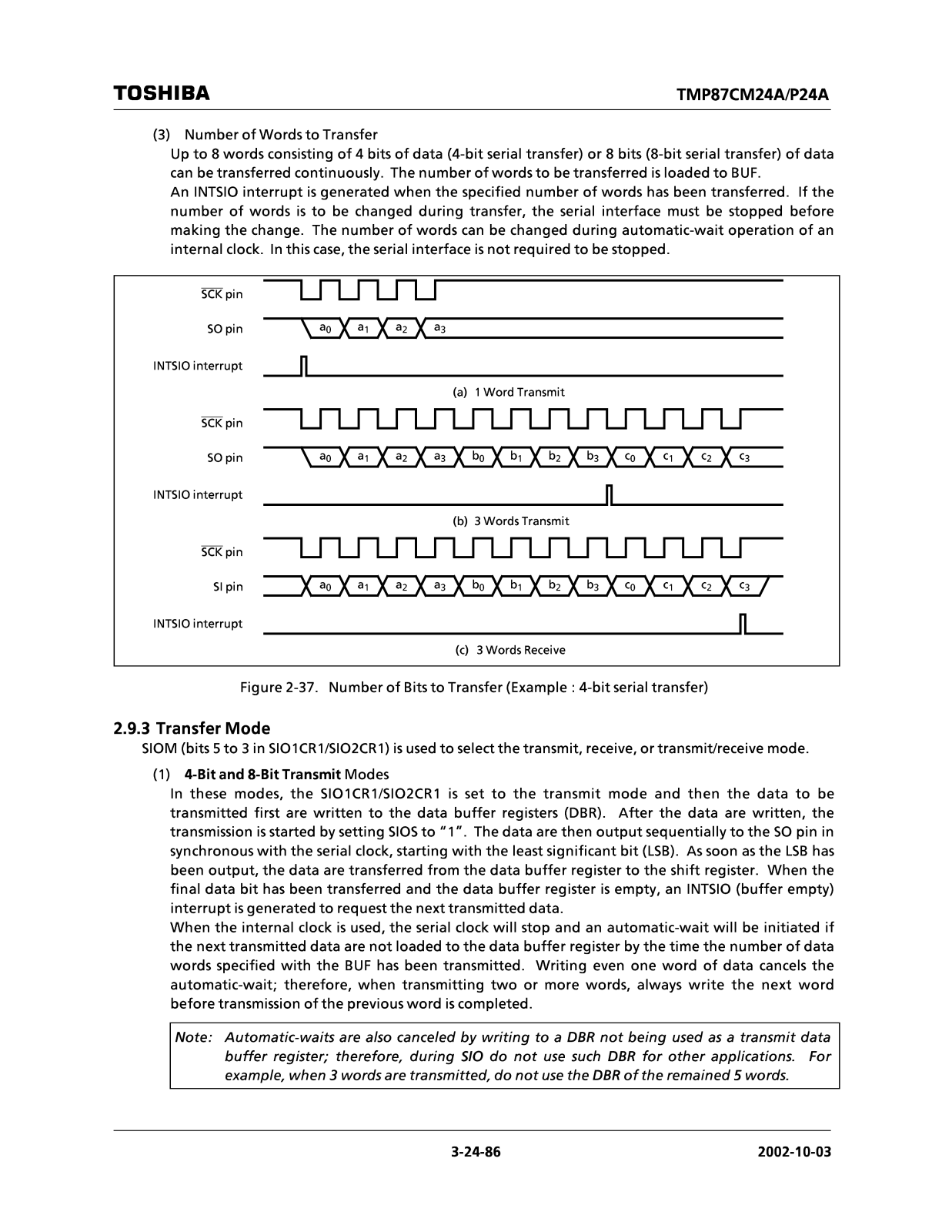






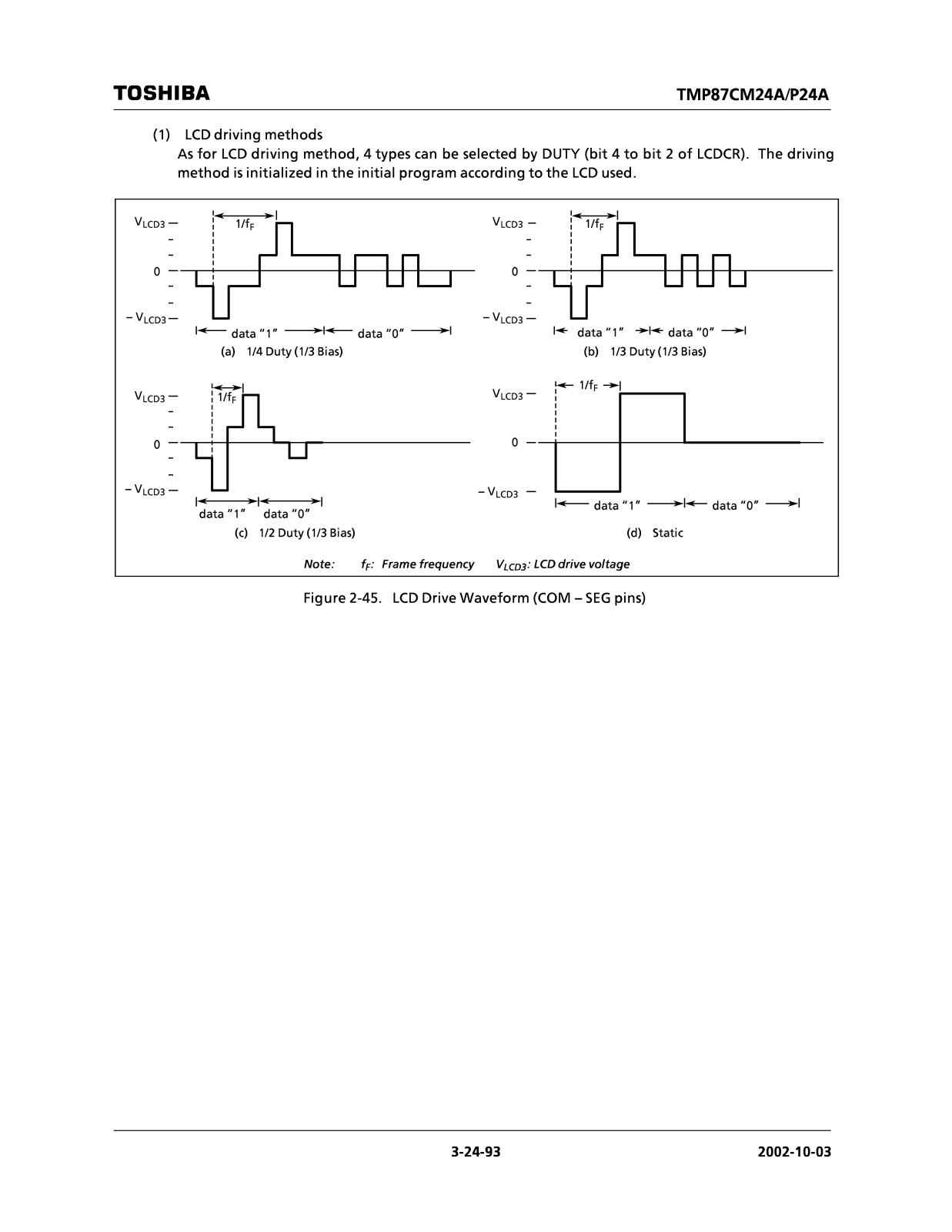





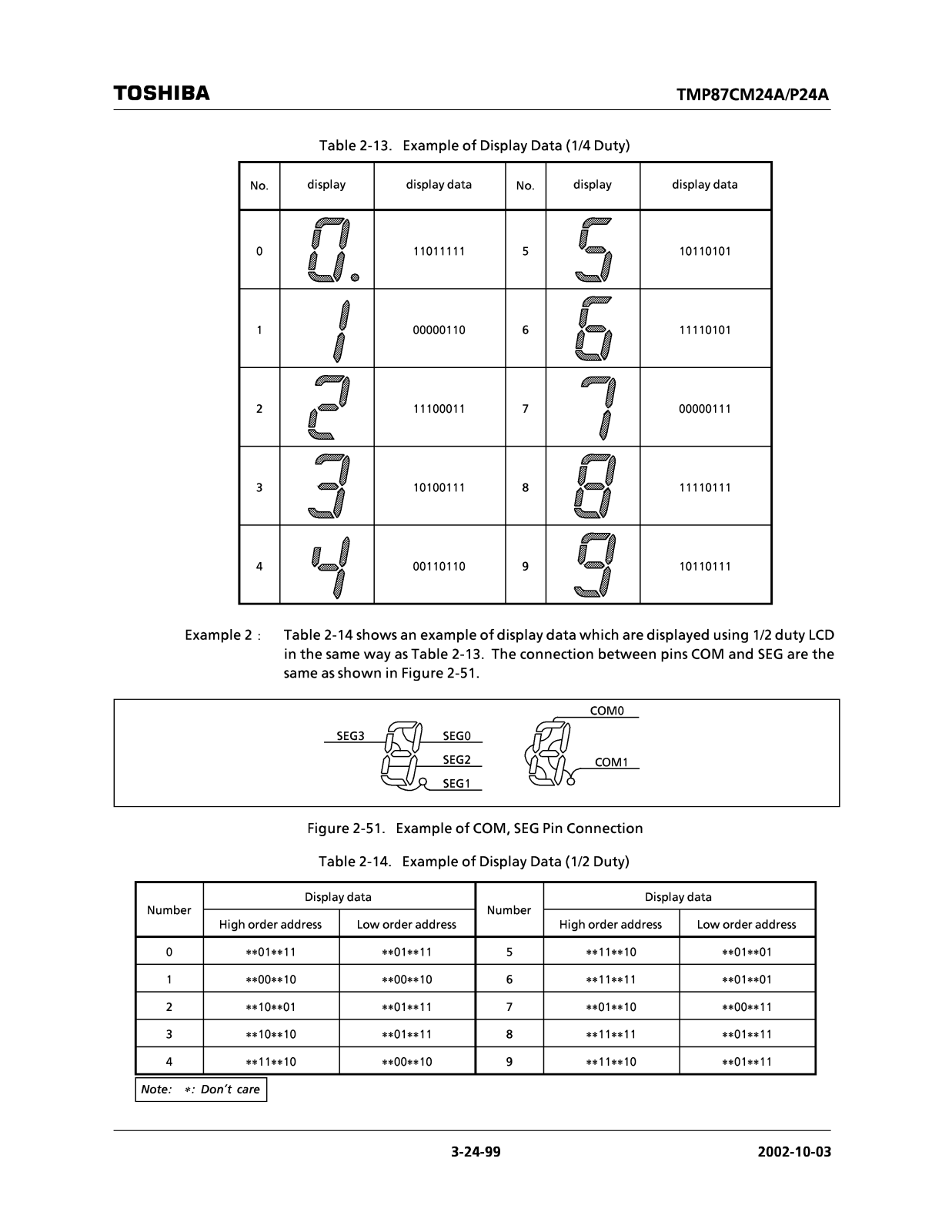

